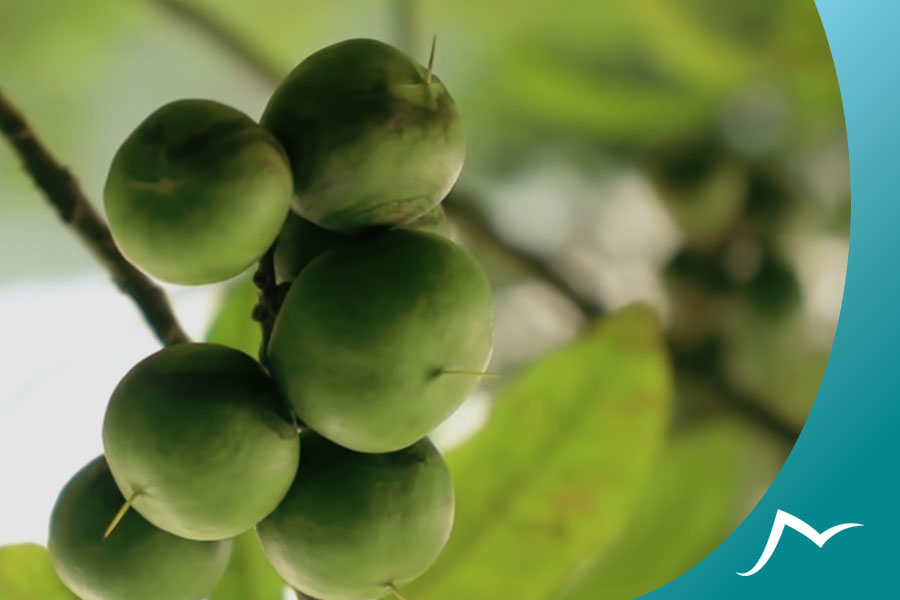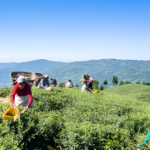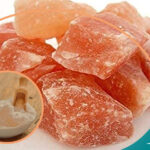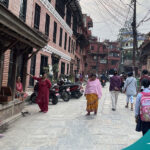Rudraksha is a spiritual and holy bead with immense significance in Hinduism and Buddhism. These seeds are believed to have originated from Lord Shiva’s tears and have been used for centuries as a symbol of devotion, protection, and power. In Nepal, Rudraksha is widely regarded as a sacred item and is often worn by devotees as a form of spiritual practice.
History of Rudraksha in Nepal
The use of Rudraksha in Nepal dates back centuries and has been an integral part of the country’s religious and cultural heritage. The sacred bead is mentioned in ancient Hindu scriptures, such as the Shiva Purana, which describes the benefits of wearing Rudraksha. It is believed that the bead’s power is derived from the energy of Lord Shiva, and wearing it can bring good fortune and protection.
Rudraksha trees are native to Nepal and grow abundantly in the foothills of the Himalayas. The trees are tall and can reach up to 200 feet in height. The Rudraksha tree’s leaves are broad and oval-shaped, and the flowers are white with a greenish-yellow hue. The Rudraksha seeds grow inside the tree’s fruit, and each fruit can contain up to 14 seeds.
Significance of Rudraksha in Nepal
Rudraksha is considered a powerful and sacred item in Nepal, and many people wear it as a spiritual practice. The bead is believed to have several benefits, including providing protection, bringing good fortune, and improving health and well-being.
In Nepal, Rudraksha is often worn by both men and women, which is believed to help with meditation and spiritual growth. The bead is also believed to have healing properties and is sometimes used in Ayurvedic medicine.
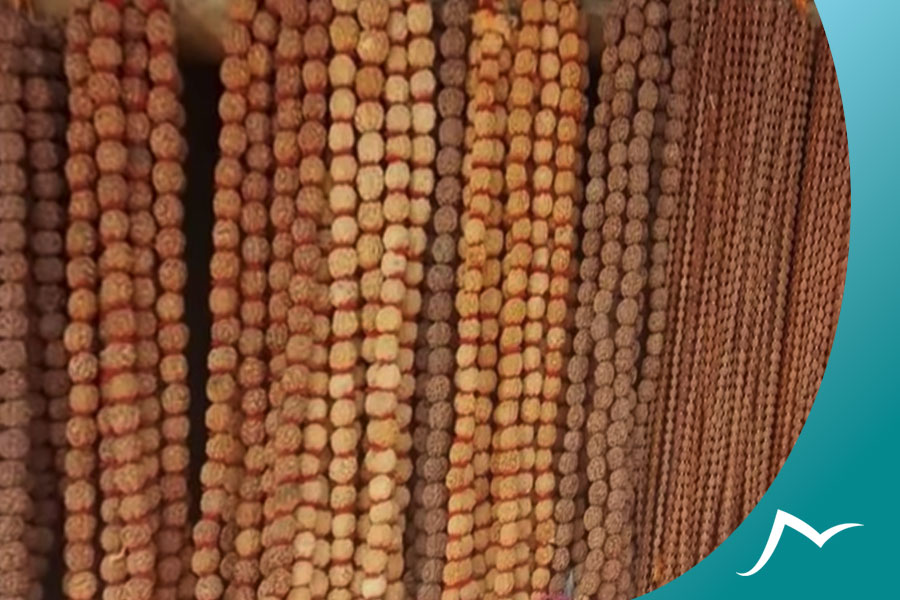
The Different Types of Rudraksha in Nepal
Nepal has several different types of Rudraksha, each with unique properties and benefits. The beads are classified based on the number of Mukhis (faces) they have, with each face representing a different deity or energy.
The most common type of Rudraksha is the 5 Mukhi Rudraksha (five-faced bead), which is believed to represent Lord Shiva. Other types of Rudraksha include the six-faced bead, which is believed to represent Lord Kartikeya, the seven-faced bead, which is believed to represent Goddess Lakshmi; and the eight-faced bead, which is believed to represent Lord Ganesha.
Rare Rudraksha in Nepal
Nepal is known for producing some of the rarest Rudraksha beads worldwide. These rare beads are considered to be highly auspicious and are in high demand among spiritual seekers and collectors. Let’s look at some of the rare varieties of Rudraksha in Nepal.
Gauri Shankar Rudraksha
Gauri Shankar Rudraksha is one of the rarest Rudraksha beads found in Nepal. It is a two-faced bead that represents the unity of Lord Shiva and Goddess Parvati. This bead is considered highly auspicious and is believed to bring harmony, unity, and happiness to relationships. Spiritual seekers and collectors alike highly seek the Gauri Shankar Rudraksha.
Ganesh Rudraksha
The Ganesh Rudraksha is a rare bead with a unique shape resembling Lord Ganesha’s head. This bead is believed to be highly auspicious and is associated with success, prosperity, and good fortune. The Ganesh Rudraksha is highly sought after by spiritual seekers and collectors alike.
Savar Rudraksha
Savar Rudraksha is one of the rarest Rudraksha beads found in Nepal. It is a one-faced Rudraksha that represents Lord Shiva. This bead is believed to be highly auspicious and is associated with enlightenment and spiritual awakening. The Savar Rudraksha is highly sought after by spiritual seekers and collectors alike.
These beads are considered highly auspicious and are associated with success, prosperity, and spiritual awakening. Collectors and spiritual seekers worldwide seek these rare beads for their significance and rarity.
The Most Popular Rudraksha in Nepal
The popularity Rudraksha bead in Nepal can depend on many factors, including its rarity, spiritual significance, and cultural traditions. Here is a look at Nepal’s most popular mukhi Rudraksha bead and why it is highly regarded.
5 Mukhi Rudraksha
The 5 Mukhi Rudraksha is Nepal’s most popular and widely used Rudraksha bead. It is a five-faced bead representing Lord Shiva, the god of destruction and transformation. This bead is believed to have many powerful properties, including increasing focus, concentration, and mental clarity. It is also said to bring peace, prosperity, and good health to the wearer.
One reason for the popularity of the 5 Mukhi Rudraksha in Nepal is its availability. It is one of the most commonly found Rudraksha beads and is widely used in traditional Nepalese jewelry, prayer malas, and other spiritual items. Additionally, the 5 Mukhi Rudraksha is associated with many traditional Nepalese festivals and rituals, which has helped cement its place as the country’s most popular mukhi Rudraksha bead.
21 Mukhi Rudraksha
The 21 Mukhi Rudraksha is Nepal’s most expensive and rarest Rudraksha bead. It is a twenty-one-faced bead representing Lord Kuber, the god of wealth and prosperity. This bead is believed to have many powerful properties, including bringing the wearer immense wealth, good fortune, and abundance.
The 21 Mukhi Rudraksha is extremely rare and difficult to find, as it grows only in some areas of Nepal and is found in minimal quantities. It is also one of the most challenging Rudraksha beads to identify, as it can be easily mistaken for other types of Rudraksha beads.
14 Mukhi Rudraksha
The 14 Mukhi Rudraksha is a fourteen-faced bead representing Lord Hanuman, the Hindu god known for his strength and devotion. This bead is believed to have many powerful properties, including protecting the wearer from negative energies, enhancing intuition and psychic abilities, and providing spiritual growth and enlightenment.
17 Mukhi Rudraksha
The 17 Mukhi Rudraksha is a seventeen-faced bead representing Lord Vishvakarma, the Hindu god of creativity and craftsmanship. This bead is believed to have many powerful properties, including bringing prosperity and success in business, enhancing creativity, and promoting overall well-being. The 17 Mukhi Rudraksha is also very rare and difficult to find, as it grows only in some areas of Nepal and is found only in minimal quantities.
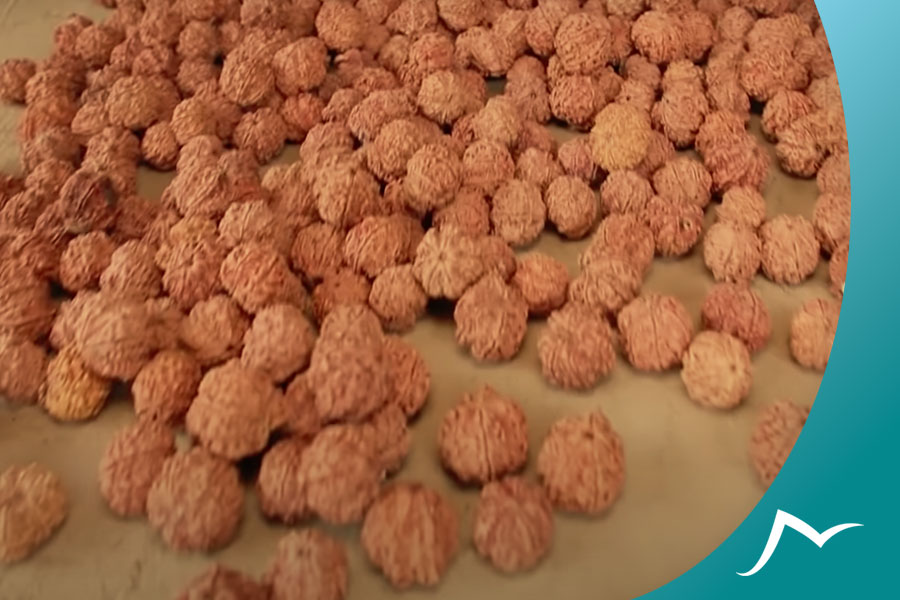
How to Identify Genuine Rudraksha?
Rudraksha, a sacred item with immense significance in Nepali culture and spirituality, is in high demand, making it vulnerable to imitation and fraud. Identifying authentic Rudraksha is crucial to ensure you receive the genuine item. Here are some ways to identify genuine Rudraksha.
Natural Contours and Markings
One way to identify authentic Rudraksha is to look for the seed’s natural contours and markings. The seed should have a smooth surface with distinct ridges, and the markings should be clear and symmetrical. The bead should also feel heavy and solid, with no hollow spaces inside.
Shape and Surface Characteristics
Genuine Rudraksha beads should have a well-defined shape and surface, with distinct lines or grooves running from the top to the bottom. Inspecting the bead for any cracks, holes, or insect damage is essential, which can indicate that it is not authentic.
Water Test
Performing a water test can also help identify authentic Rudraksha. Fill a glass with water and place the Rudraksha seed inside. If the bead is authentic, it will sink to the bottom of the glass. If the seed floats or moves around in the water, it is likely a fake.
Texture, Etchings, and Smell
To determine if a Rudraksha is authentic, one must look for specific characteristics, such as its texture, etchings, and smell. The bead should have a distinct smell, often earthy, sweet, or woody. The texture should be rough and natural, without smoothness or polishing. Etchings on the bead should be sharp and well-defined.
Other Tests
Several tests can be performed to identify fake Rudraksha beads, including the float, copper coin, and hot needle tests. Rub the Rudraksha seed against a copper coin in the copper coin test. If the coin turns black, the bead is likely fake. Heat a needle and touch it to the Rudraksha seed in the hot needle test. It is likely fake if the seed melts or emits a foul smell.
Buying from a Reputable Seller
Buying Rudraksha from a reputable and experienced seller is crucial to ensure the beads are authentic. In Nepal, many sellers have been selling Rudraksha for generations and have a deep understanding of their significance and properties. When purchasing Rudraksha online, it is essential to conduct thorough research to ensure that the seller is trustworthy and reputable.
Identifying genuine Rudraksha beads is crucial to their effectiveness. With authentic Rudraksha beads, one can experience protection, good fortune, and spiritual growth for years.
Where to Find Rudraksha in Nepal
Rudraksha beads can be found in many parts of Nepal, especially in the areas where the trees grow. These trees are found mainly in the foothills of the Himalayas, particularly in the regions of Taplejung, Ilam, and Panchthar.
In Nepal, the most popular places to buy Rudraksha are in the markets of Kathmandu, particularly in the Thamel, Boudhanath, and Pashupatinath areas. Many small shops and stalls also sell Rudraksha beads in other parts of Nepal, such as Patan, Pokhara, Bhaktapur, and other major cities. Let’s look at some of the popular Rudraksha markets in Nepal.
Pashupatinath Temple
Pashupatinath Temple is a famous Hindu temple located in Kathmandu, Nepal. It is one of the most significant temples in the world for Lord Shiva’s followers. The temple complex has a designated area where Rudraksha beads are sold. These beads are considered authentic and are believed to carry the blessings of Lord Shiva.
Boudhanath Stupa
Boudhanath Stupa is a Buddhist shrine located in Kathmandu, Nepal. It is one of the largest stupas in the world and a UNESCO World Heritage Site. The market near the stupa is known for its authentic and reasonably priced Rudraksha beads. The market has a variety of Rudraksha beads ranging from single-faced to twenty-one-faced beads.
Thamel Market
Thamel is a tourist hub located in Kathmandu, Nepal. The market in Thamel is a popular destination for purchasing souvenirs and other items, including Rudraksha beads. The Rudraksha beads sold in Thamel Market are reasonably priced, but it is essential to be careful when purchasing them here. Due to its popularity among tourists, some unscrupulous sellers may try to pass off fake Rudraksha beads.
How to Use Rudraksha
Rudraksha is commonly worn as a necklace or bracelet and can also be used as a meditation tool. Some people also keep Rudraksha beads in their homes or workplace for spiritual and protective purposes.
When using Rudraksha for meditation, holding the bead in your right hand and closing your eyes is recommended. Focus on the bead and take deep breaths, allowing your mind to become calm and centered. Some people also recite mantras while meditating with Rudraksha.
In Nepal, it is common for people to wear Rudraksha on specific days of the week or during specific religious festivals. For example, during the festival of Shivratri, it is common for devotees to wear Rudraksha as a symbol of their devotion to Lord Shiva.
The Benefits of Rudraksha
Rudraksha is believed to have several benefits, both spiritual and physical. Some of the most common benefits of Rudraksha include:
Protection
Rudraksha is believed to protect against negative energies and evil spirits. It is also believed to protect the wearer from accidents and illnesses.
Good fortune
Rudraksha is believed to bring good luck and fortune to the wearer. It is also believed to attract wealth and prosperity.
Spiritual growth
Rudraksha is often used as a tool for spiritual growth and meditation. It is believed to help the wearer connect with their inner self and achieve a state of enlightenment.
Healing
Rudraksha is believed to have healing properties and is sometimes used in Ayurvedic medicine to treat various ailments.
Rudraksha and Nepali Culture
Rudraksha is an essential part of Nepali culture and is often seen as a symbol of devotion and faith. It is common to see Nepali people wearing Rudraksha beads as a form of spiritual practice, and it is also used in religious rituals and ceremonies.
In Nepal, it is believed that Rudraksha beads can bring good luck and protection to the wearer. Many Nepali people keep Rudraksha beads in their homes or workplaces to ward off negative energies and promote positive energy.
The Future of Rudraksha in Nepal
Rudraksha has been an integral part of Nepali culture and spirituality for centuries, and it will likely remain an essential item for many years. However, with globalization and modernization, the traditional use of Rudraksha may be changing.
As Nepal becomes more connected to the global market, there is a growing demand for Rudraksha from buyers around the world. While this can be positive for the Nepali economy, it can also increase the production of fake or low-quality Rudraksha beads.
It is important to promote sustainable and ethical harvesting practices to ensure that the traditional use of Rudraksha in Nepal is preserved. It is also important to educate buyers on identifying authentic Rudraksha to prevent the sale of fake or low-quality beads.
FAQs
How long does it take for Rudraksha to show its effects?
The time Rudraksha takes to show its effects varies from person to person. Some people may feel its effects immediately, while others may take longer. Generally, it is believed that it takes about 40 days for Rudraksha to start showing its effects.
Can anyone wear Rudraksha?
Yes, Rudraksha can be worn by anyone regardless of age, gender, or religion. It is believed to have no adverse side effects and can benefit anyone who wears it.
How to take care of Rudraksha?
To ensure the longevity of Rudraksha and its effectiveness, it is essential to take proper care of it. It should be kept clean and dry and should not be exposed to chemicals or extreme temperatures. Applying oil or ghee on Rudraksha is recommended to keep it hydrated and prevent cracking.
What is the significance of the number of faces/mukhi of Rudraksha?
The number of faces/mukhi of Rudraksha represents different deities and has different benefits. For example, a 1 mukhi Rudraksha is the most powerful and associated with Lord Shiva, while a 14 mukhi Rudraksha is believed to enhance charisma and leadership qualities.
Can Rudraksha be used for healing purposes?
Rudraksha is believed to have healing properties and can be used for various ailments such as high blood pressure, stress, and anxiety. However, it is essential to consult a healthcare professional before using it for medicinal purposes.
How can I wear Rudraksha for maximum benefits?
Rudraksha can be worn as a bracelet or a necklace close to the skin to ensure maximum benefits. It is recommended to wear it on the right hand for males and the left hand for females.
Can Rudraksha be worn with other gemstones?
Yes, Rudraksha can be worn with other gemstones. However, it is essential to consult an astrologer or a gemstone expert before wearing it with other stones to ensure compatibility.
Can Rudraksha be worn during pregnancy?
Yes, Rudraksha can be worn during pregnancy, but it is important to consult a doctor and an expert.
How can I differentiate between genuine and fake Rudraksha?
Genuine Rudraksha has specific characteristics such as a clear and distinct mukhi, a natural hole, and a smooth surface. Fake Rudraksha may have glued mukhi or holes, rough surfaces, or inconsistencies in shape and size.
Conclusion
Rudraksha is a highly revered and sacred item that holds immense significance in Nepali culture and spirituality. The use of Rudraksha for protection, good fortune, and spiritual growth is deeply rooted in Nepali traditions, and it continues to play a vital role in the lives of many Nepalis.
As Nepal continues to develop and become more connected to the global market, it is essential to preserve the traditional use of Rudraksha and promote sustainable and ethical harvesting practices. This will ensure that future generations can continue to benefit from the power and significance of Rudraksha in Nepal.
Furthermore, it is crucial to recognize Rudraksha’s cultural and spiritual significance and respect its traditional use. This includes understanding the proper way to wear and care for the beads and the significance of the different mukhi or faces of the beads.
In conclusion, Rudraksha is not just a simple bead but a powerful symbol of Nepali culture and spirituality. By preserving its traditional use and promoting sustainable harvesting practices, we can ensure that the power and significance of Rudraksha in Nepal continue to be felt for generations to come.
